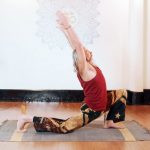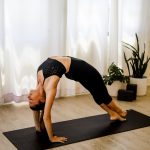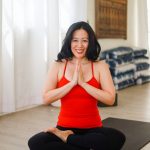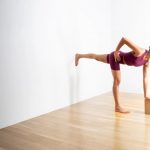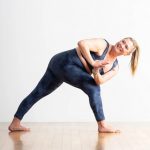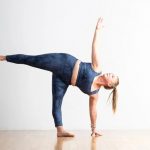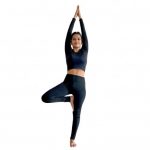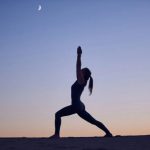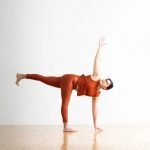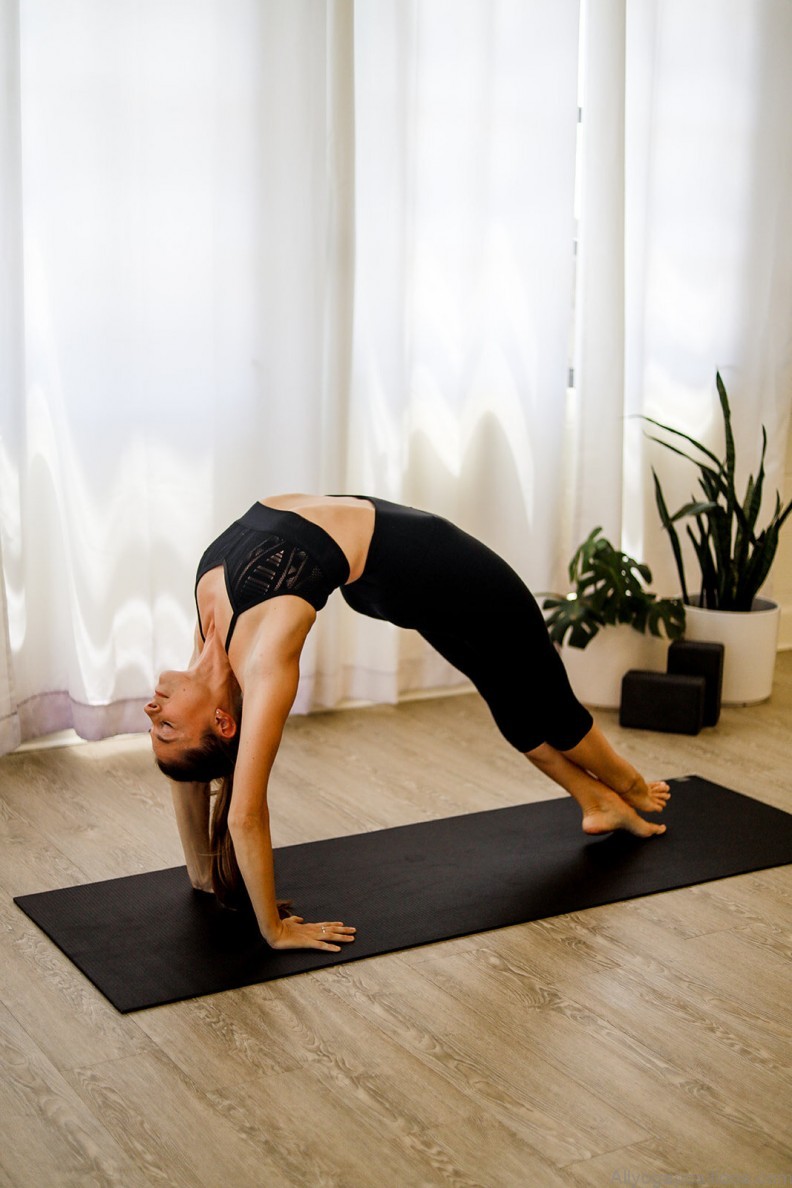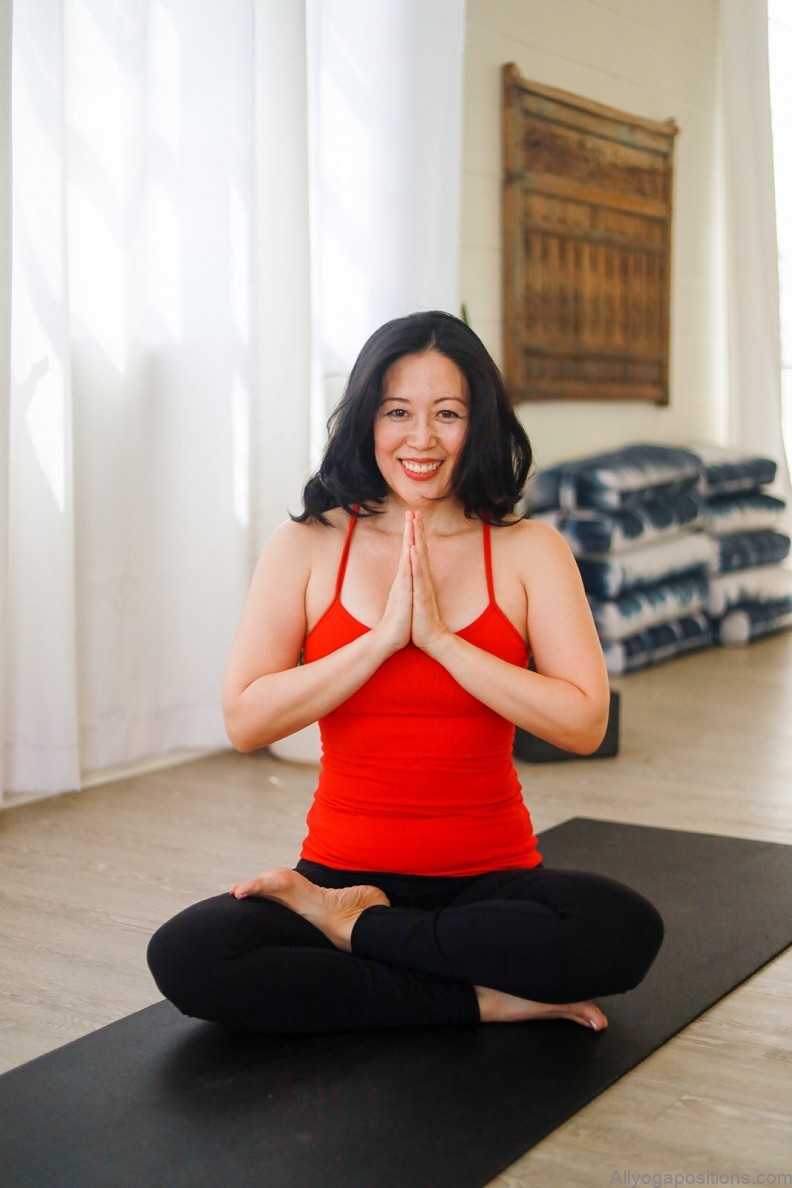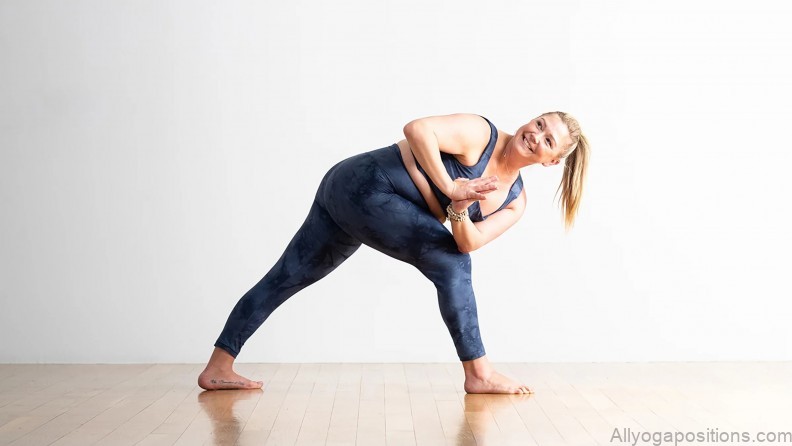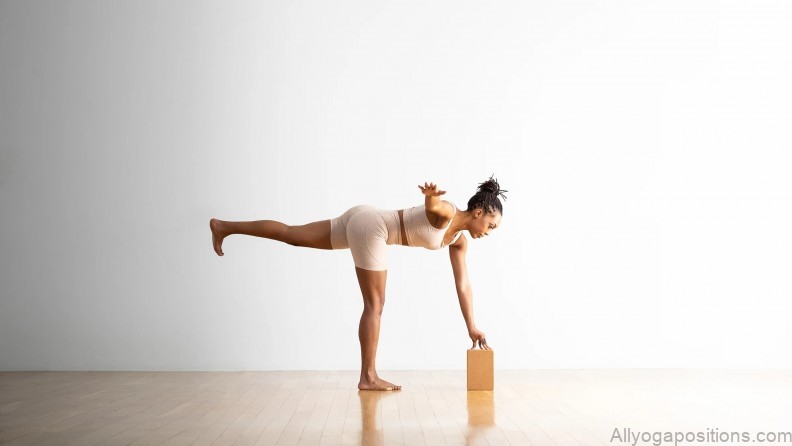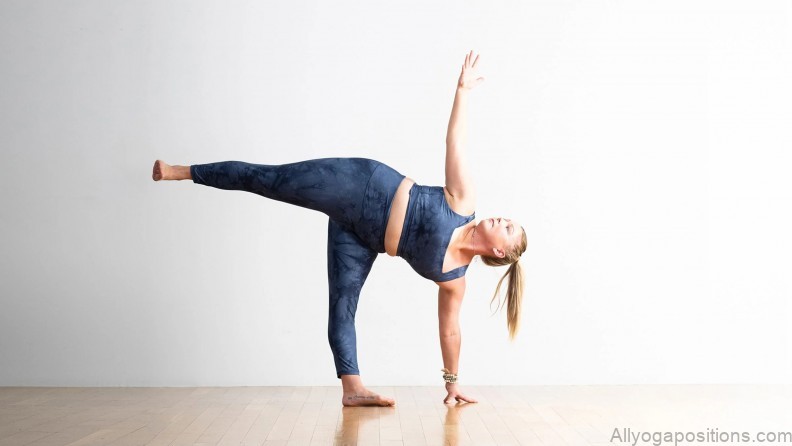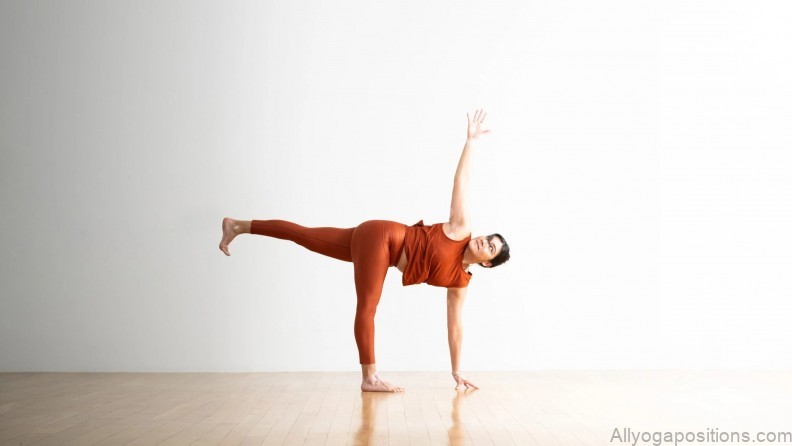Understanding Parivritta Ardha Chandrasana
Parivritta Ardha Chandrasana, commonly known as the Revolved Half Moon Pose, is a challenging yet rewarding yoga posture that combines aspects of balance, flexibility, and strength. The pose’s name derives from Sanskrit, with “Parivritta” meaning revolved, “Ardha” denoting half, “Chandra” translating to moon, and “Asana” standing for pose. As is the case with many yoga poses, the name metaphorically indicates the balance and tranquility one seeks while performing it.
Often practiced as a part of the standing sequence in Vinyasa or Ashtanga Yoga, Parivritta Ardha Chandrasana demands not just physical prowess but also immense mental concentration and body awareness. It invites practitioners to delve deep into their own bodies, challenging their limits, and discovering their innate potential for resilience and balance.
Benefits of the Revolved Half Moon Pose
The practice of Parivritta Ardha Chandrasana entails a plethora of benefits that extend beyond the physical aspects of strength and balance. From a physiological perspective, this pose promotes spinal health by providing a deep, detoxifying twist that aids in the release of tension in the spine. It stretches and strengthens various parts of the body including the ankles, legs, chest, shoulders, and the lower back.
Furthermore, as a twist pose, it also stimulates the abdominal organs, enhancing digestion and the detoxification process. Practicing this pose regularly can potentially improve your body’s overall metabolic functions.
On the psychological level, Parivritta Ardha Chandrasana enhances focus, concentration, and mental fortitude. The pose’s demanding nature means that practitioners need to stay centered and present, thereby cultivating mindfulness and reducing stress and anxiety.
Discovering Harmony and Balance with the Revolved Half Moon Pose Photo Gallery
Performing the Revolved Half Moon Pose
To perform Parivritta Ardha Chandrasana, begin in a standing forward bend (Uttanasana). Place your right hand on the mat directly under your nose, while keeping your left hand on your left hip. Now, gently lift your left leg off the floor, extending it straight behind you. Aim for a parallel position with the floor.
Once balanced, start to twist your torso to the left. If comfortable, extend your left arm towards the ceiling. Keep your gaze fixed on your left thumb to help maintain balance. Hold this position for a few breaths before gently returning to the standing forward bend. Then, repeat the pose on the other side.
Remember, the key to mastering this pose lies not in forcing your body into the position but in easing into it while maintaining steady breaths and concentration.
Common Mistakes and Modifications
Practicing Parivritta Ardha Chandrasana can be quite challenging, especially for beginners, and it’s common to encounter difficulties. A common mistake is to compromise the alignment of the spine in an effort to get deeper into the pose. This can potentially strain the back and neck. Remember, yoga is not about contorting your body at the cost of your comfort. Listen to your body and only go as far as it allows.
If you find it difficult to balance, you can modify the pose by using a block under your hand for support. If twisting your torso is challenging, you can keep your gaze down towards the mat instead of looking up, reducing the intensity of the twist.
With practice, patience, and time, you’ll find your body slowly adapting to the demands of this pose.
Integrating Parivritta Ardha Chandrasana into Your Yoga Routine
Parivritta Ardha Chandrasana can be a great addition to your yoga routine. It offers a comprehensive workout and brings a sense of balance and focus to your practice. It’s best to incorporate this pose into your practice after you’ve warmed up your body with some standing and twisting poses.
Including this pose as part of a sequence that also involves standing, balancing, and twisting postures will maximize its benefits. After performing the Revolved Half Moon Pose, remember to give your body a good counter-stretch with poses like Child’s Pose or Corpse Pose.
In conclusion, Parivritta Ardha Chandrasana, with its unique blend of balance, strength, and flexibility, invites practitioners to explore their boundaries and discover new facets of their yoga journey. Whether you are a seasoned yogi or just a beginner, this pose has something to offer. Remember, every time you step on your mat, you are embarking on a journey of self-discovery and self-improvement. Namaste.
Table of Contents
Maybe You Like Them Too
- Mastering Virabhadrasana A: The Warrior Pose of Empowerment
- Embracing the Essence of Wide Legged Forward Bend: A Deep Dive
- Unlocking the Power of Prasarita Padottanasana: The Wide-Legged Forward Bend
- The Power and Elegance of the Wide Legged Forward Bend II Yoga Pose
- Mastering the Warrior II Pose: A Deep Dive into Its Benefits and Techniques

